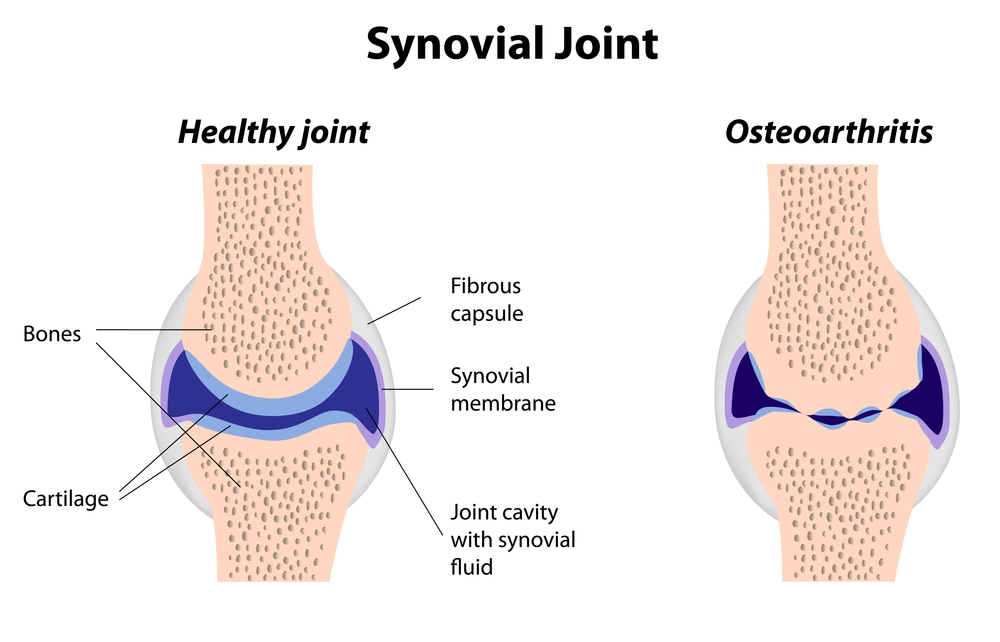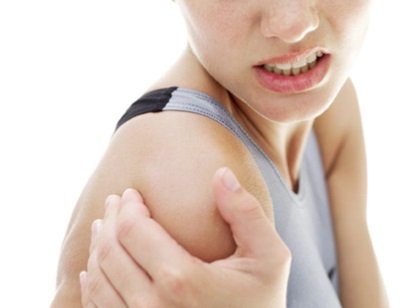Wear in the shoulder joint
The overall prevalence of shoulder pain in the UK population is estimated to be around 7%, rising to 26% in the elderly. In the US The prevalence of chronic shoulder pain is estimated to be 15% overall. Although we are referring to “the shoulder joint”, the shoulder is actually made up of two separate joints. The glenohumeral joint causes the upper arm and the shoulder blade to move relative to each other. Above it is the acromioclavicular joint (or AC joint) that allows you to move the collar bone and shoulder blade relative to each other. Arthritis in the shoulder may develop in one or both joints. When this occurs in both joints the condition is referred to as ‘omarthrosis’.
Cause arthritis in the shoulder
Osteoarthritis in the shoulder occurs when the cartilage in the joints starts to wear. As a result, the thickness of the cartilage layer decreases and the shoulder joints become closer. Like arthritis in, for example, the knees, hips and back, omarthrosis is usually the result of a natural wear process. Upon ageing, the quality of the cartilage decreases, causing it to wear off. Furthermore, this condition can also be caused by damage to the joints by an accident or the performance of activities that put too much strain on these joints. In addition prolonged inflammation in the joints of the shoulder (for example, a mucous membrane or tendon inflammation) or low-grade inflammation in the body can also trigger this wear process.
Symptoms of arthritis in the shoulder
Cartilage acts as a kind of ‘shock absorber’ in the joints and also ensures that the joints can move smoothly over each other. When this cartilage tissue wears off, the shoulder joints move less smoothly and less far. Pain may occur especially during movement. Like many other types of osteoarthritis, this condition may also be associated with morning stiffness. The joints hurt and are stiff after a long time of rest. Over time, these symptoms will decrease when you move. At an advanced stage, almost all the cartilage between the joints may have disappeared. Then bone-on-bone contact occurs. This can be very painful. The body will try to correct the loss of cartilage by generating bone at the edges of the shoulder joint. As a result, the joint becomes wider and the pressure is distributed over a larger area.
Diagnosis osteoarthritis in the shoulder
In cases of issues in the shoulder (pain, stiffness, limitation of freedom of movement) one does not have to initially think of osteoarthritis. These are delicate joints that are also sensitive to many different other conditions. With physical examination and testing, the doctor will first see if the pain and stiffness is caused by something else.
For example, some other causes could be bursitis, tendon or muscle inflammation, “frozen shoulder,” tendon calcification, or radiating pain from another neck problem such as neck hernia or neck arthritis. In some extreme cases the cause could be a dislocated arm. An X-ray is taken when there is a reasonable suspicion that the shoulder complaints are caused by arthritis. In addition, the physician will determine the amount of bone loss by means of a CT scan. An MRI scan is not a standard procedure to determine shoulder arthritis.
Treatment of arthritis in the shoulder
Unfortunately, cartilage does not regenerate: once gone, it will not return. The goal of treatment is to keep the remaining cartilage as healthy as possible. Physical therapist can often provide additional help for arthritis patients. The physical therapist uses exercises to teach the patient how to put strain on the shoulders differently. Heavy strain on the shoulder during therapy is discouraged, but light strain helps to keep the joints flexible and the muscles strong. If joint wear is accompanied by pain, the doctor may prescribe anti-inflammatory medication, known as NSAIDs.
Most noteworthy the disadvantages of NSAIDs are that they can cause a whole series of annoying, and sometimes dangerous, side effects. If you prefer not to take NSAIDs, it is advisable to look for a natural alternative. A liquid combination of Green-Lipped Mussel and Bio-Curcumin for instance. In 70% of patients with arthritis, this natural pain reliever and anti-inflammatory supplement has similar results compared to medications in the long run (average 4-5 weeks, max. 80 days). To date, there are no known side effects with the use of Green-lipped mussel and Bio-Curcumin (BCM-95®).
In some cases of severe osteoarthritis, the shoulder joint will eventually be replaced by a shoulder prosthesis.
Exercises in arthritis of the shoulder
The exercise program below can help to improve the mobility of the shoulders. You should complete each exercise three times. Always take 30 seconds after each series. Good luck.
Mobilizing exercise 1:
Sit on a chair with your arms beside the body. Now, lift both arms above the head. Hold 3 seconds. Then lower your arms next to your body.
Mobilizing exercise 2:
Sit on a chair with your arms beside your body. Bring your left hand up in the neck between the shoulder blades. Hold 3 seconds and lower your arm again. Repeat this exercise with your right arm.
Mobilizing exercise 3:
Sit on a chair with your arms next to your body. Bring your arms to the back as close as possible to your shoulder blades. Hold 3 seconds and then return your arms back to the starting position.
Mobilizing exercise 4:
Stand in front of a table and lean with a hand on the top. The other arm allows you to relax. Pull your arm loosely forward forwards for a minute. Do this exercise with the other arm.
Mobilizing exercise 5:
You will stand upright with your arms in your neck and your upper arms horizontally with your elbows as far apart as possible. Hold this position for 3 seconds. Return to the starting position with your elbows now as far back as possible. Hold for 3 seconds and then return to the starting position again.

Share this page
Tweet

Download for free the booklet ‘Moving without pain’ with a retail value of $6.75 / £4.95.
Any questions? Please feel free to contact us. Contact us







